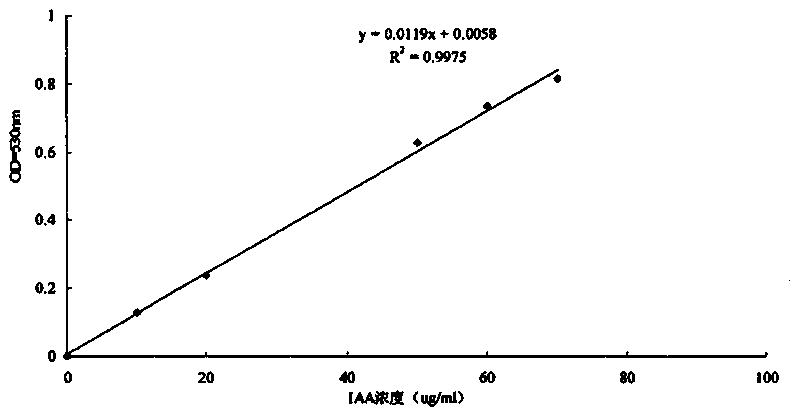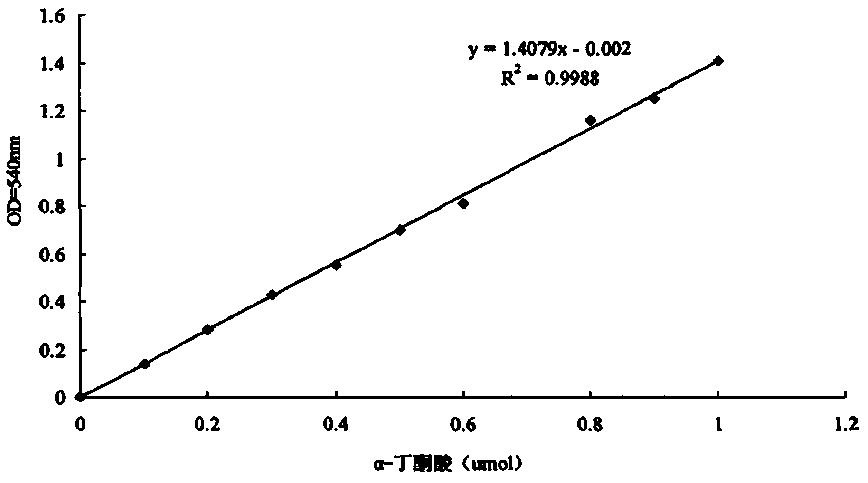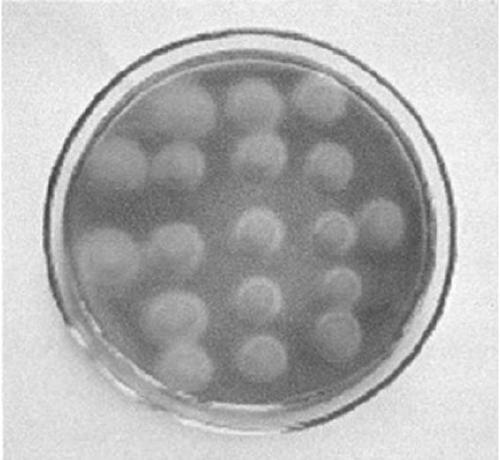Hydrogen-oxidizing bacteria having self-nitrogen fixing capacity, and separation method and application thereof
A hydrogen oxidizing and bacteria technology, which is applied to the hydrogen oxidizing bacteria SDW-16 and its separation, cultivation and application fields, can solve the problems of difficult separation work and insufficient research work.
- Summary
- Abstract
- Description
- Claims
- Application Information
AI Technical Summary
Problems solved by technology
Method used
Image
Examples
Embodiment 1
[0025] Example 1 Isolation and purification of soil microorganism SDW-16 and identification of hydrogen-absorbing enzyme
[0026] The bacterial strain of the present invention is isolated from the sandawang rhizosphere soil in the orchard of Northwest University in Shaanxi Province.
[0027] The identification characteristics of the strain are as follows:
[0028] 1. Physiological and biochemical characteristics
[0029] The physiological and biochemical characteristics of strain SDW-16 are shown in Table 1
[0030]
[0031] 2. Sequence analysis
[0032] The 16S rDNA sequence determination and phylogenetic tree construction of the strains were carried out according to the following steps, and the template DNA was extracted according to the standard steps on the UNIQ-10 Column Bacterial Genome Extraction Kit. The specific steps are as follows:
[0033] (1) Collect and lyse cells
[0034] G-bacteria
[0035] A. Add 1 mL of the bacteria suspension to be tested that has be...
Embodiment 2
[0053] Example 2 Determination of strain secretion IAA ability
[0054] Use an inoculation loop to pick a single colony that has been activated for 24 h and inoculate it in 5 mL of LB liquid medium, culture it in a shaker at 180 r / min at 28 °C for 24 h, take 1 mL of the bacterial liquid and add it to a sterilized clean 1.5 mL centrifuge tube , centrifuged at 10,000 r / min for 10 min, discarded the supernatant, washed the bacterial pellet twice with sterile water, and then diluted 10 times with sterile water to obtain a bacterial suspension. Take 100 µL of the above bacterial suspension and inoculate it into 50 mL KingB-Trp medium (final concentration of L-Trp is 100 mg / L), in a shaker at 180 r / min, culture at 28°C for 72 h, then transfer the culture medium Centrifuge at 5000 r / min for 20 min in a centrifuge, and transfer the supernatant to a new clean centrifuge tube. Take 1 mL of supernatant and 1 mL of Salkowski reagent and mix evenly, let it stand in a dark place at room te...
Embodiment 3
[0056] Example 3 Determination of bacterial strain ACC deaminase activity
[0057] First prepare 100 mM α-butyruvate stock solution with Tris-HCl solution ((0.1M, pH 8.5), then dilute the above stock solution to 10 mM with the same Tris-HCl solution, and configure 0∽1.0 µM standard solution, add 200 µL standard solution from each gradient to a clean 5 mL cryovial, then add 1.6 mL of HCl (0.56 M) solution and 0.2% 2,4-dinitrophenylhydrazine solution in sequence ((0.2 g of 2,4-dinitrophenylhydrazine dissolved in 100 mL of 2M HCl) 300 L, mixed well on a vortex shaker, placed in a 30°C water bath for 30 min, and finally added to the above mixture Add 2 mL of NaOH solution ((2 M) to terminate the reaction, NaOH, α-butanuonic acid and 2,4-dinitrophenylhydrazine will undergo a color reaction, and measure the absorbance of each gradient at 540 nm and establish standard curve line.
[0058] After the standard curve was established, the ACC deaminase activity of each strain was measur...
PUM
 Login to View More
Login to View More Abstract
Description
Claims
Application Information
 Login to View More
Login to View More - R&D
- Intellectual Property
- Life Sciences
- Materials
- Tech Scout
- Unparalleled Data Quality
- Higher Quality Content
- 60% Fewer Hallucinations
Browse by: Latest US Patents, China's latest patents, Technical Efficacy Thesaurus, Application Domain, Technology Topic, Popular Technical Reports.
© 2025 PatSnap. All rights reserved.Legal|Privacy policy|Modern Slavery Act Transparency Statement|Sitemap|About US| Contact US: help@patsnap.com



